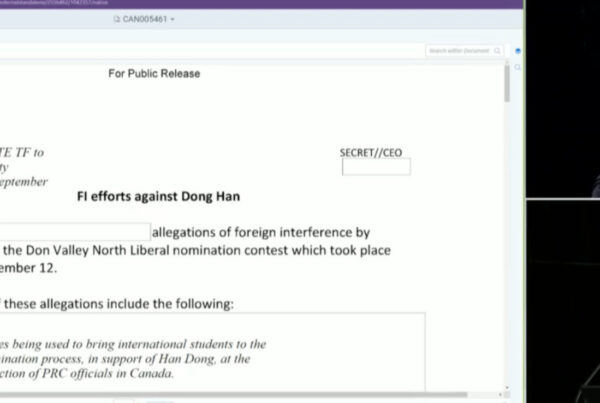Is the death of Osama bin Laden a cause for triumph? Would that it were…
Triumph is an interesting word and it is fascinating to look at its roots. Originally, a triumph was a celebration of the return of a victorious commander and his troops in the ancient Roman Republic. The custom was an archaic one (by no means restricted to the Romans alone) and answered some very fundamental needs of the human psyche.
Visualize, if you will, a Triumph of Scipio Africanus, or Pompey, or Caesar in Rome. The senate has voted to allow the general to enter the city with his men under arms (a practice normally strictly forbidden), and the general heads a procession. Mixed in with the marching soldiers are floats displaying heaps of arms and armour taken from the enemy – trophies of the vanquished – along with treasures looted from their cities. Some of the silver and gold are strewn to the cheering crowds who are, in turn, throwing flowers in the path of the troops.
The general is in a tunica palmata of purple embroidered with golden palm fronds and his face and hands are coated with red powder – signifying the blood of the enemy. Perhaps, back in Rome’s early days when the enemy was a few hours march away, a commander might have marched back into the city with the foe’s literal dried blood caked on his face and hands. Somewhere in the procession are captured enemy leaders on display before the people.
At the end of the Triumph, any crowned kings among them will be taken to Rome’s only prison, the Tullianum, to be ritually strangled. Republican Rome had a strict law that no monarch could cross into the city and live but troublesome enemy commanders would be treated the same way.
Thus the people see their men march home, see the weapons of the enemy on display, share in the loot, and elate over the doomed foe. They can see with their own eyes that the enemy is vanquished, the war is over and they can celebrate.
Our modern world is somewhat less colourful, for good and for ill. One can get the impression that what passes for civilization these days can leave us emotionally stunted. We might be a lot less prosaic and brutal than our ancestors but we also seem to have less capacity for elation and joy.
At any rate, we will now never see Osama bin Laden being led in chains along Pennsylvania Avenue or Wall Street while cheering Americans throw rose petals at his escort of Navy SEALS and US Army Rangers; nor will his ritual execution signal the end of the War on Terror. We will, fortuitously, have missed seeing either the President or the current head of the Joint Chiefs of Staff rumbling along in a chariot, clad in purple and gold, with his face coated in red paint. In many ways, however, the world could have used the spectacle.
The struggle against terrorism sometimes touches raw emotions in the way few more conventional conflicts now manage. The terrorist uses the randomness of his violence and atrocity to induce fear in a wide audience. His tactics are outside the accepted rubric of conflict so his contempt for normal behaviour seems both sacrilegious and evil. Except for the stunted intellects of those who hate our society, most of us take the insult of terrorism to heart and desire to see the terrorist punished with a visceral yearning that seldom applies to other foes.
There are two problems with yielding to this urge: Cruelty and brutality are addictive practices and one should take extreme care in employing them. There is that old warning from Nietzsche that one who fights monsters should take care not to become a monster too. The second point is this transformation is exactly what the terrorist often hopes to induce in the society he attacks.
Still, in counter-terrorism, old habits and traditions sometimes come back into play with very little quibbling from the public.
While there may be a widespread public appetite for extralegal-homicide in counter-terrorism, Nietzsche’s warning is never more applicable. If it must be resorted to, it should be as secret as possible and be undertaken by only the most disciplined specialists; if discovered, those who ordered it must face the consequences of the law and the vast majority of the public must believe that death squads, torture, etcetera are clearly a lesser evil than that offered by the terrorists. Even with these conditions met, the practice is dangerously corruptive.
The old English ‘Hot Trod’ or right of hot pursuit is widely accepted – countries will pursue the terrorists who have gored them no matter where they go, without paying the usual dues or following courtesies of international law. Israel’s pursuit of the architects of the 1972 Munich Massacre was generally approved of by most people. Other than some quibbling about territorial sovereignty from Pakistan, few people dispute the right of the Americans to pursue Osama bin Laden there.
Nor did nobody weep too much when the Hizbollah master terrorist, Imad Mughnieh, was vaporized by a car bomb in Syria in 2008: What goes around, comes around’ is another soundly accepted principle. The American film maker, Michael Moore, might have grumbled about the lack of a trial for bin Laden while most of his country rejoiced in the shooting, but Moore betrays a startling ignorance of the nature of radical ideology and the psychology of their adherents with his complaint.
The world was able to put the defeated leaders of Nazi Germany and Imperial Japan on trial in 1946 for two reasons: First, because it was safe to do so – the racist militarism both countries espoused had been defeated; and second, this defeat had broken the attraction of their ideologies. One can’t reason with an ideologue (a point many of Moore’s critics may have themselves noted); rather the ideologues’ great cause has to be seen to have been broken. The defendants at Nuremberg were mostly broken men and despite some shabby defiance, they could not articulate a cause that would inspire anyone. Nor did they have supporters prepared to use violence to protest the trials.
The Jihad movement is far from broken and itself represents but one dimension of a larger ideology of Islamic Triumphalism – the notion that Islam is supposed to rule uber alles. Had Osama bin Laden been taken alive and put on trial somewhere, his own commitment to the cause would be largely unshaken and he would probably have used a trial as a soapbox to inspire legions of adherents. Two 25 cent bullets into his brain was a far better measure of justice and infinitely safer for the world. We must still remember that this sort of solution is habit-forming and dangerous for our souls, and should only be engaged in sparingly.
The need to shun primal violence in counter-terrorism has other consequences. Like the Romans dragging captives home to display triumphantly and then ritually execute, humans have often taken trophies from what they have slain. We might not mind (too much) the hunter who takes a head from a deer or a moose to the taxidermist but we have long told our soldiers not to bring home heads or scalps from slain opponents. The prosaic argument is that this is disrespectful and unsanitary. More practically, it is hard to engage in peaceful relations with former enemies when you have body parts of their kin folk on proud display on your walls.
Old habits die hard. While very few allied soldiers returned home from the Second World War with parts of enemy soldiers; most of them sought trophies in terms of souvenir badges, weapons, or personal items like wristwatches. Regulations in most Western militaries prohibit this sort of behaviour nowadays, although the prohibition is frequently violated. What is clear, especially since 2001, is that ‘trophy photos’ of dead or captured enemies are strictly forbidden.
American and Canadian troops have been disciplined for taking photos of themselves standing on dead Taliban and Al Qaeda in ‘lion-hunter’ poses. Press photographers embedded with the military (and military press photographers) are instructed not to publish or broadcast any material showing the faces of dead foes or of captured ones. Such photos as are taken for intelligence purposes such as identifying the dead, are kept classified and are not available to the public for decades. These are the practices; there have been violations, but these are the exceptions that prove the rule.
This contrasts with the videos posted by members of al Qaeda, the Taliban and the Chechens that show them beheading captives with knives. Other videos depict firing squads chopping up Iraqi Christians with bursts of automatic fire, stoning women (with especially gruesome footage coming from Pakistan and Iran), or dousing bound homosexuals in lighter fluid and tossing them into fires. Typically some masked gunman is busy waving his finger and expostulating, while his cohorts punctuate his remarks with shouts of ‘God is great’.
When Coalition troops kill a Muslim foe, the body is buried within 24 hours in accordance with Islamic tradition. We’ve never found many of the bodies of hostages taken by Islamic Terrorists. We treat their graves with respect, but this is the first war in a many decades where the Australians, British and Canadian armies send all their own dead home. While the Commonwealth War Graves Cemeteries strewn around so much of the world are treated with respect, we have no guarantee Jihadists would ever be so civilized.
Thus we come to the death of Osama bin Laden and the many complaints about the suddenness of his burial and the lack of pictures of his corpse.
The President of the United States is as much bound by the regulations he issues as any of his soldiers. Disciplined troops will not respect leaders who impose a rule on them that they do not follow themselves. If troops who take trophy shots of dead Taliban are disciplined for it, then the same restrictions must apply to the White House. It is clear that even so un-military a leader as President Obama understands this. Hence, there will be no official release of photos of the killing or corpse of bin Laden.
Of course, the United States being what it is, the press can challenge the regulation through Freedom of Access laws, and demand that photos be released to them for broadcast. However, the point is that access would have to be contested through law – which is itself a telling point.
While burial at sea is not a preferred Islamic custom, most major religions understand that funerary rites and practices must exist for such circumstances and Islamic practice insists that bodies be interred within 24 hours of death. The United States could have dumped the body of Osama bin Laden anywhere in the broad reaches of the ocean, but their stated practice of treating all dead in US custody with the appropriate rites dictated that Osama’s body be dropped into the sea after a burial service – which was undoubtedly devoid of military custom and honours but still strictly in line with Islamic requirements.
Without displaying concrete of the evidence of the killing of Osama bin Laden, the United States is merely asking that the world take it as a given that the terrorist leader is dead. Most of the world accepts the statement, although the inevitable conspiracy theorists are hard at work constructing their own versions of the truth.
The old maxim that “Victory has a thousand fathers where defeat is an orphan” has also been at play with the joke that Osama’s death is accompanied by 72 versions of what actually happened. Inevitably, Washington is riddled with political figures and aides all eager to give some small fact that buttresses their claim to have been somehow tangentially involved in the raid on Bin Laden’s safe-house. It does not help that the identities of the members of Seal Team Six must be concealed, or that records of Special Forces’ activities are held in secret until 30 years have gone by.
It would be nice to stage a triumph, to have brought bin Laden and his lieutenants in chains to march them up to the site of the former World Trade Center past cheering throngs and there execute them. But Ancient Rome is long gone and we’re better behaved than that… Being disappointed in small things is the price for moral behaviour and reminds us of that most fundamental fact in dealing with Islamists – we are the good guys and they are not!








